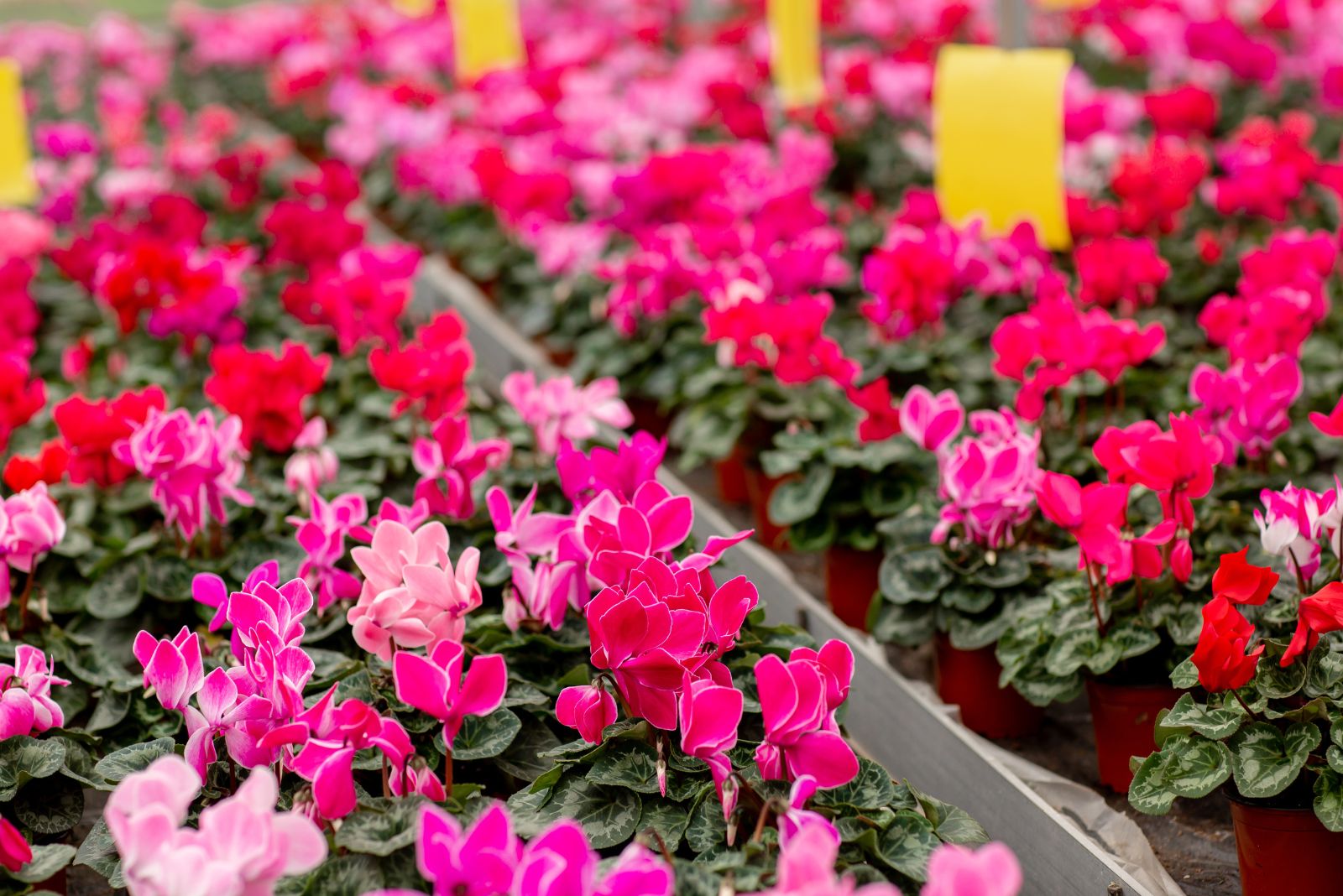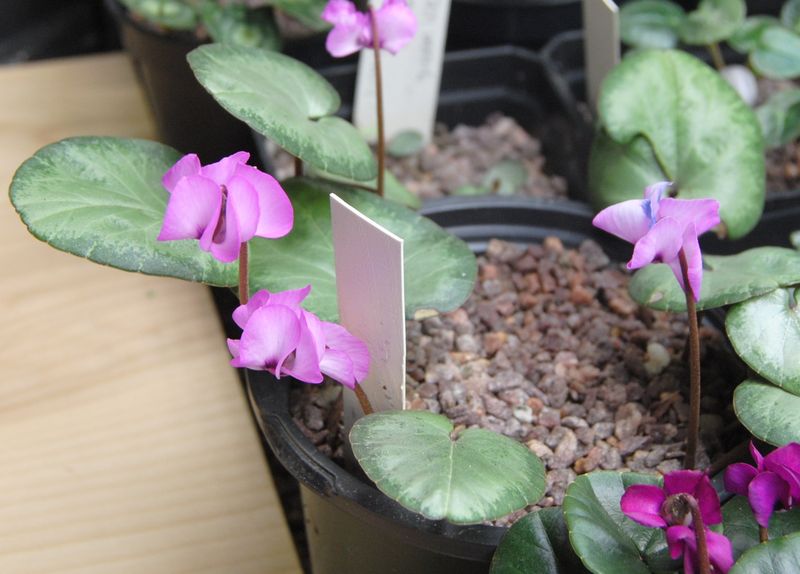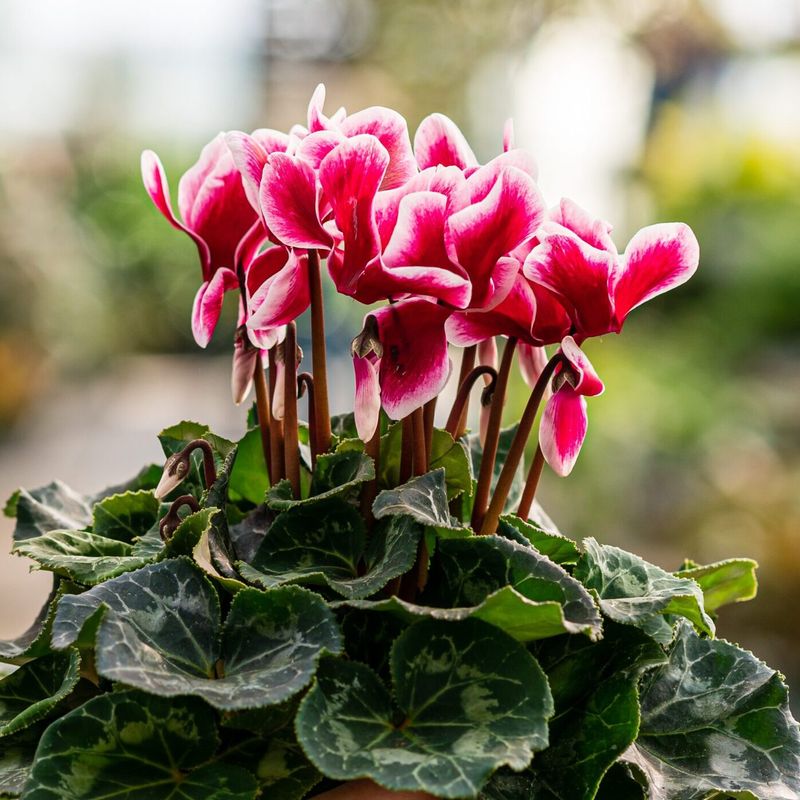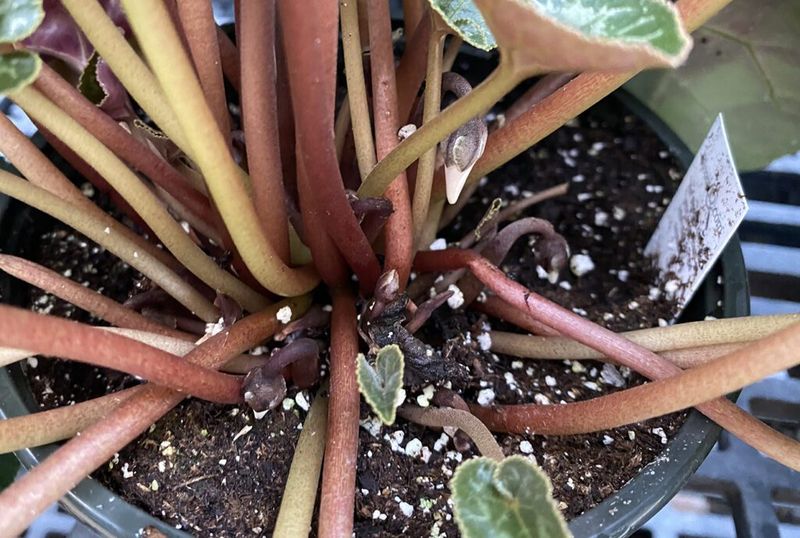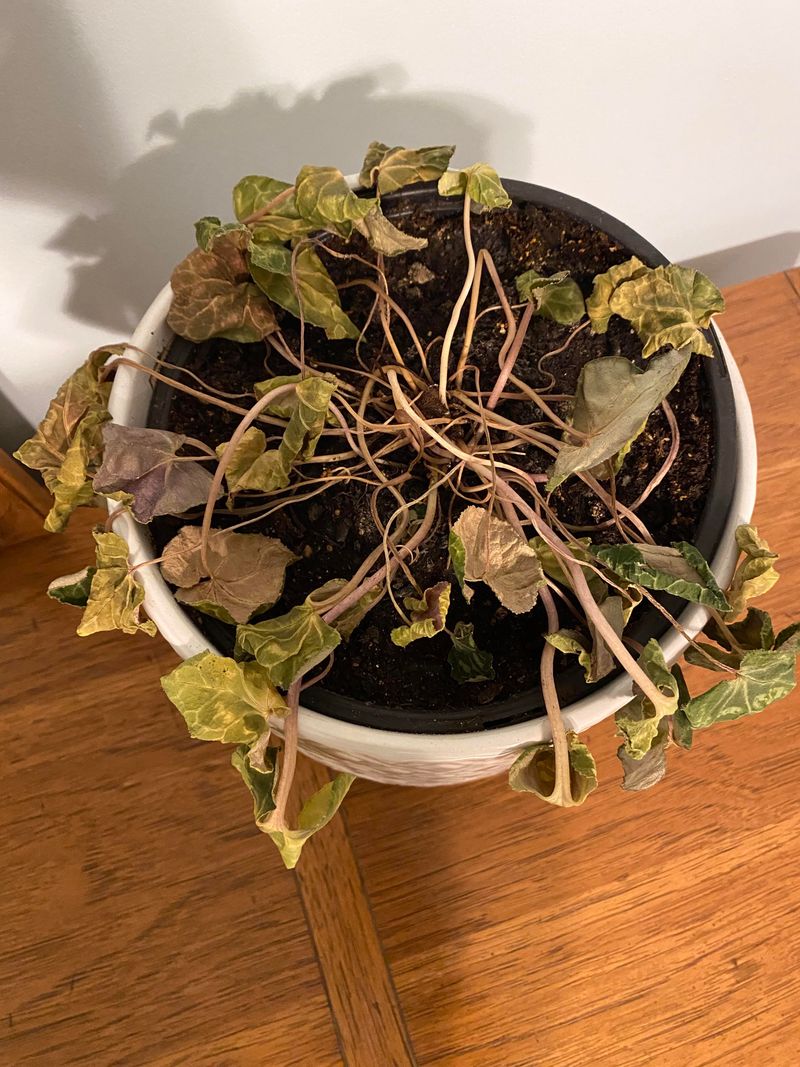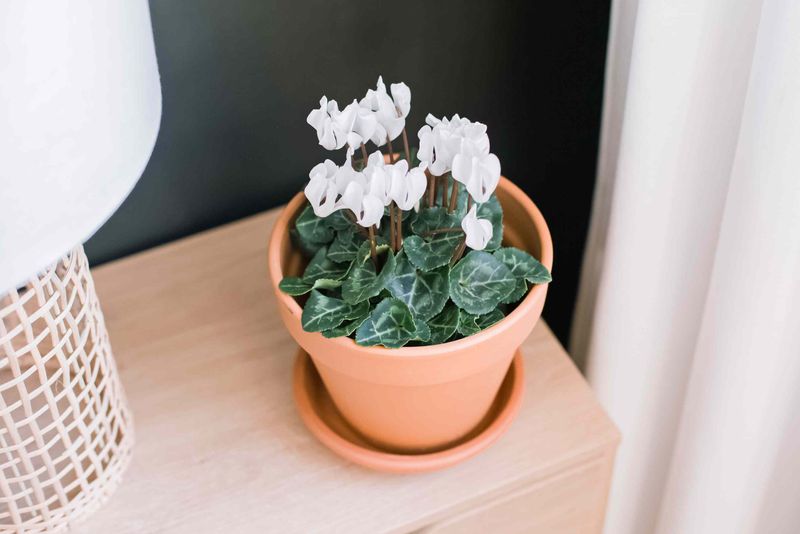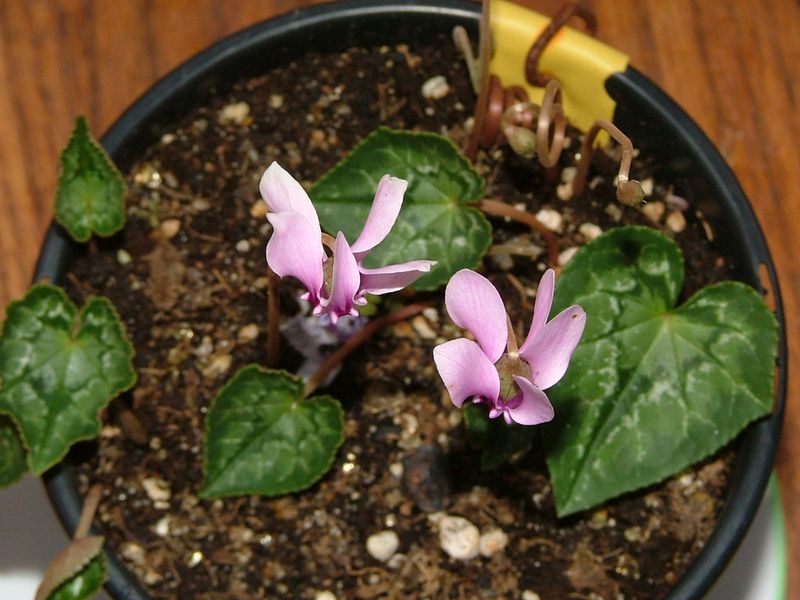Nevada winters can fool even the most careful shopper, and cyclamen often pay the price.
I’ve watched people pick the brightest plant on the shelf, only to take home one that gives up before the season even hits its stride.
The desert climate plays tricks, and cyclamen have their own set of rules that don’t always match what shoppers expect.
A plant that looks picture-perfect in the store might already be stressed, and the real clues hide in the details most folks overlook.
Understanding those little signals can save a lot of winter disappointment.
1. Ignoring Cold Hardiness Zones
Many shoppers grab the prettiest cyclamen without checking if it can handle Nevada’s freezing nights.
Our state spans multiple hardiness zones, from Zone 5 in the mountains to Zone 9 in Las Vegas, which means temperatures vary wildly.
Florist cyclamen look gorgeous but can’t survive outdoors when temperatures drop below 40 degrees.
Hardy cyclamen species like Cyclamen coum or hederifolium tolerate much colder weather and actually prefer it.
Always ask which zone the plant is rated for before buying.
Matching the plant to your specific area ensures it survives winter instead of becoming an expensive decoration that dries within weeks.
2. Choosing Florist Varieties For Outdoor Use
Picture this: you see stunning cyclamen with massive blooms at the store and imagine them brightening your front yard.
Unfortunately, those eye-catching specimens are florist cyclamen bred exclusively for indoor living.
These tender varieties dry quickly when exposed to outdoor conditions, even in mild Nevada winters.
They need consistent temperatures between 50-65 degrees and can’t handle temperature swings or frost.
Outdoor cyclamen have smaller flowers but tougher constitutions, so if you want garden cyclamen, specifically request hardy outdoor species.
Save the florist types for indoor pots where you control the environment and can enjoy their spectacular blooms safely.
3. Missing The Watering Sweet Spot
Cyclamen are famously fussy about water, yet shoppers often pick plants without understanding their unique needs.
Too much water rots the tuber instantly, while too little causes the leaves to yellow and collapse.
Nevada’s dry air tricks people into overwatering, thinking the plant needs constant moisture.
Actually, cyclamen prefer their soil to dry slightly between waterings, especially during our winter months.
Look for plants in well-draining pots with soil that feels barely moist, not soggy or bone-dry.
Avoid any cyclamen sitting in water trays or showing soft, mushy stems at the base, these warning signs mean trouble ahead.
4. Overlooking Dormancy Cycles
Did you know cyclamen naturally go dormant during hot months?
Shoppers in Nevada frequently toss out perfectly healthy plants, mistaking normal dormancy for death.
When you buy cyclamen in winter, you’re getting them during their active growing season.
They bloom beautifully, then as spring warms up, the leaves dry completely. This is natural behavior, not plant failure.
Choose cyclamen knowing they’ll disappear for part of the year, the tuber stays alive underground and returns when temperatures cool again.
Understanding this cycle prevents disappointment and helps you appreciate these unique bloomers for what they truly are, seasonal performers.
5. Picking Sun-Scorched Plants
Bright sunlight seems perfect for flowering plants, right? Wrong!
Cyclamen actually prefer shade or filtered light, especially during Nevada’s intense winter sun at high elevations.
Shoppers often select plants displayed in full sun at garden centers, not realizing the damage has already begun.
Leaves turn pale, flowers fade quickly, and growth becomes stunted when cyclamen get too much direct light.
Examine leaves carefully before purchasing. Healthy cyclamen have deep green or silver-patterned foliage, not washed-out or yellowish leaves.
Position your plant where it receives morning light but afternoon shade for best results in our desert climate.
6. Falling For Stressed-Out Specimens
Garden centers sometimes keep cyclamen in less-than-ideal conditions, and stressed plants rarely recover fully.
Shoppers get tempted by discount prices without recognizing the warning signs of a struggling plant.
Limp leaves, brown edges, leggy stems, and sparse blooms all indicate the plant has suffered.
While the price might seem attractive, these cyclamen need significant recovery time and may never reach their full potential.
Invest in healthy specimens with compact growth, numerous buds, and perky foliage, a few extra dollars buys you months of reliable blooms.
Check under leaves for pests and inspect the tuber top for firmness before making your final selection.
7. Neglecting Soil And Drainage Needs
Soil might seem like an afterthought, but it makes or breaks cyclamen success in Nevada.
Many shoppers plant directly into our native clay or caliche without amending it first, which spells disaster.
Cyclamen tubers rot almost immediately in heavy, water-retentive soil.
They need loose, well-draining mixtures that allow excess moisture to escape quickly while retaining just enough for root health. Before buying, consider whether you have appropriate potting mix or can amend your garden soil.
Look for cyclamen already planted in quality, chunky soil with visible perlite or bark.
Proper drainage is non-negotiable for these Mediterranean natives thriving in Nevada winters.

